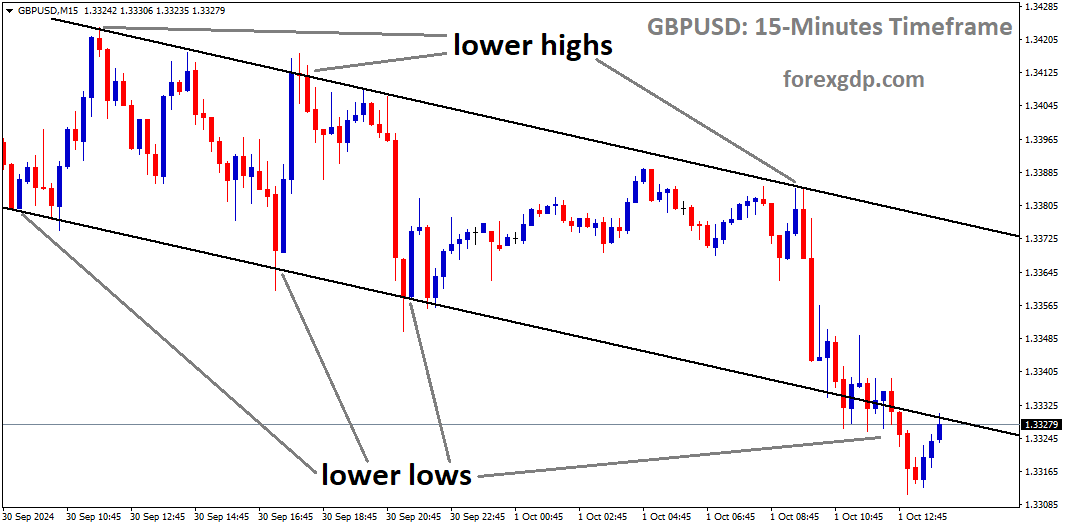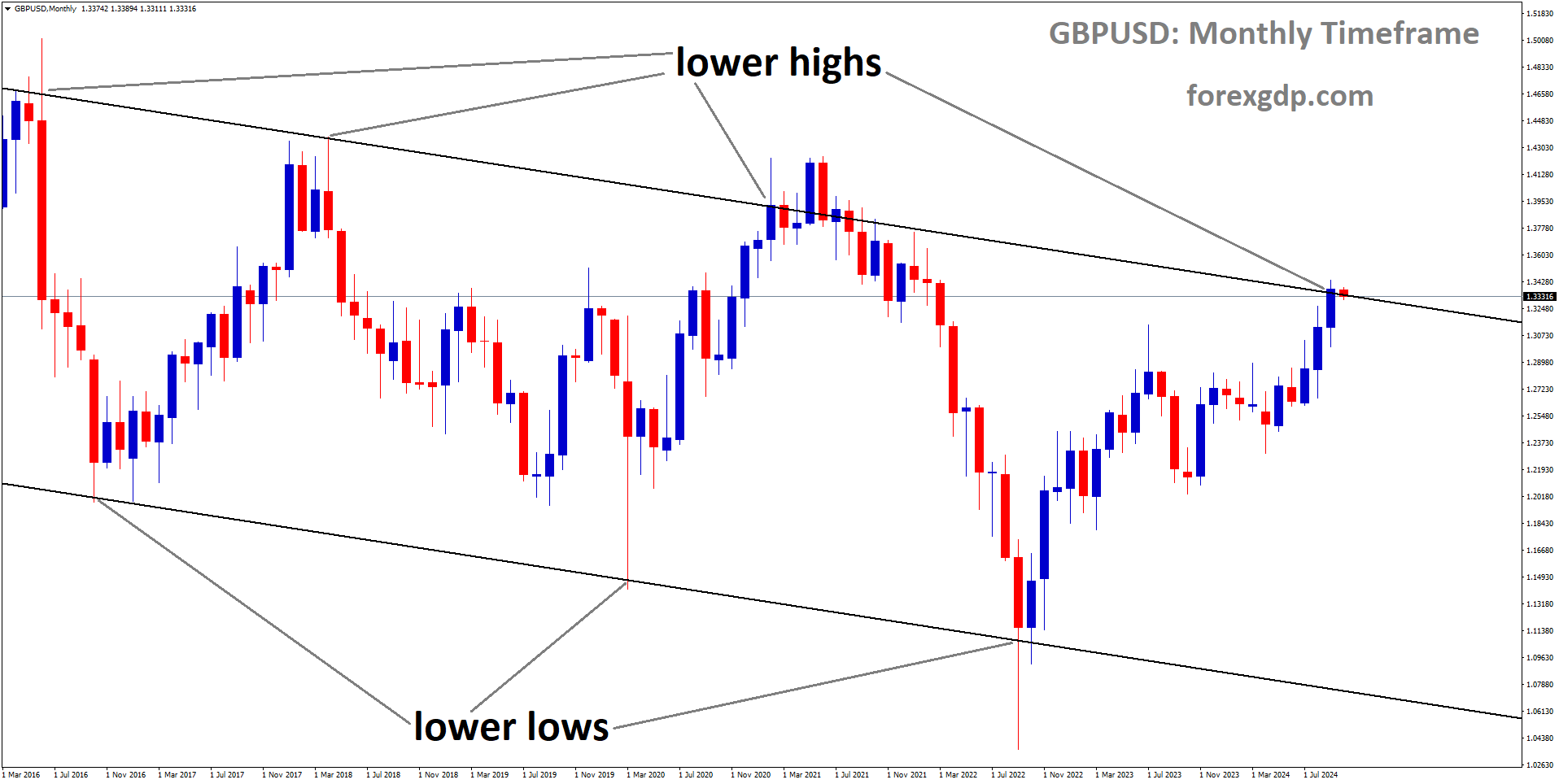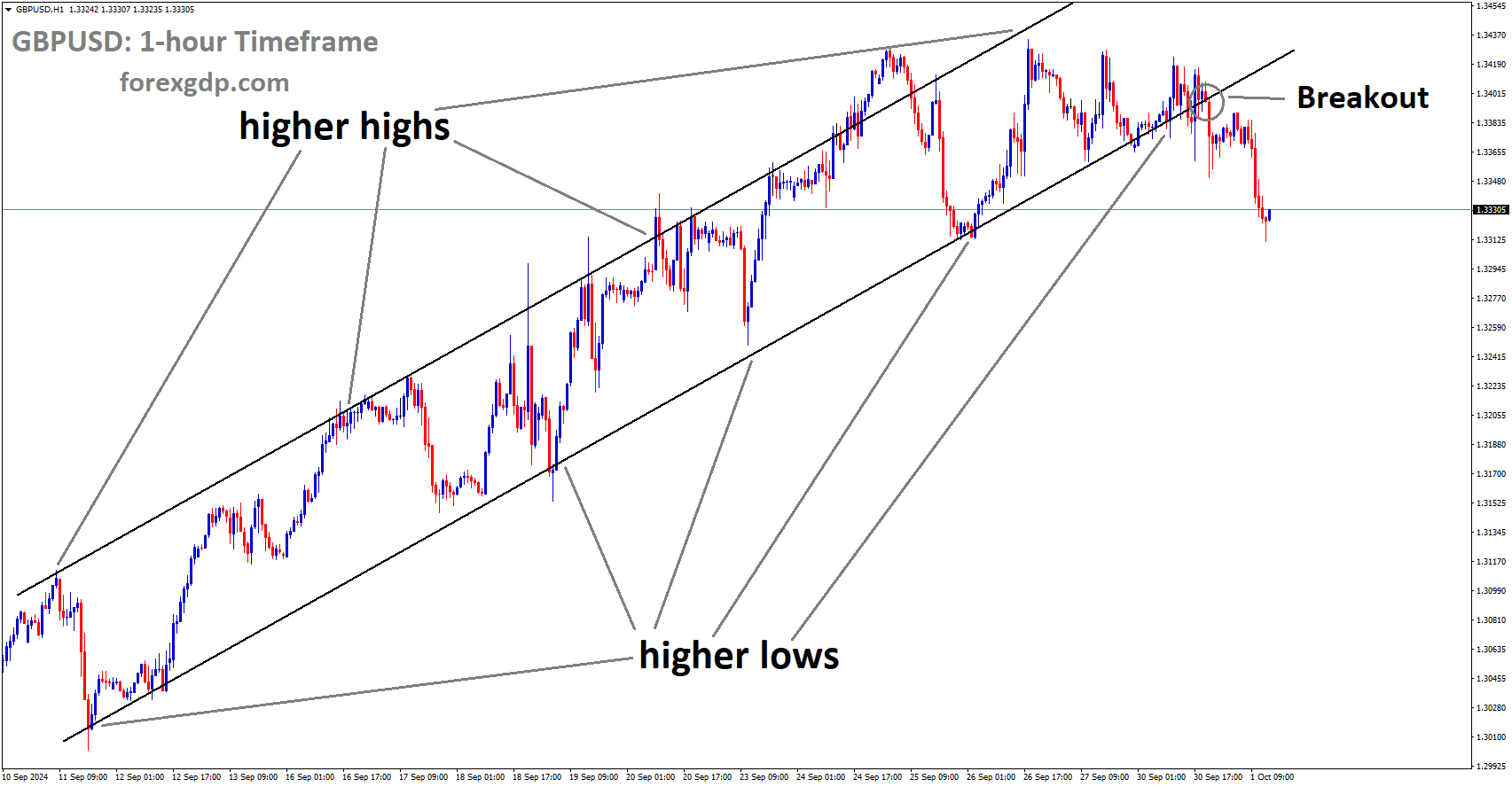GBPUSD is moving in a descending channel, and the market has reached the lower low area of the channel
#GBPUSD Analysis Video
The Pound Sterling Faces Challenges as US Data Looms Large
The Pound Sterling (GBP) has seen a sharp drop recently, causing quite a stir in the currency markets. As it struggles against the US Dollar (USD), many are wondering what’s driving this downward trend. It’s not just a simple dip—there’s a lot more going on beneath the surface. With upcoming economic data from the US expected to play a major role in shaping the future of the GBP/USD pair, it’s worth diving deep into the current situation and understanding the key factors in play.
Why Is the Pound Sterling Falling?
One of the major reasons for the fall in the value of the Pound against the US Dollar is investor sentiment. Investors are cautious right now, especially as everyone awaits important economic data from the US that could provide clues on what’s next for interest rates. With the US labor market data just around the corner, it’s no wonder that traders are holding back, leading to volatility in the currency market.
What’s Happening in the US Economy?
The US economy plays a big role in the current fluctuations of the GBP/USD pair. Investors are keeping a close eye on upcoming reports like the ADP Employment Change and Nonfarm Payrolls (NFP) data, which are both expected to give fresh insights into the health of the US labor market. These reports are particularly important because they will help economists gauge how aggressive the Federal Reserve (Fed) will be with interest rate cuts.
The Fed has already made some moves, with a recent rate cut of 50 basis points (bps) aimed at boosting the economy. But Fed Chair Jerome Powell has been cautious, signaling that while more cuts may be on the horizon, they won’t be happening in quick succession. This cautious stance from the Fed is creating uncertainty in the market, which in turn is contributing to the pressure on the Pound Sterling.
What’s Going On in the UK?
While the US economy is one piece of the puzzle, the UK’s own economic situation is also playing a major role in the fall of the Pound Sterling. Inflation has been a hot topic in the UK for quite some time, and recent comments from Bank of England (BoE) Monetary Policy Committee (MPC) member Megan Greene have only added fuel to the fire.
GBPUSD is moving in a descending channel, and the market has reached the lower high area of the channel
BoE’s Concerns About Inflation
Megan Greene recently warned that inflation in the UK could rise again due to a recovery in consumer spending. This is worrying because inflation had seemed to be under control after a recent dip, but a rebound in prices, especially in the services sector, could push inflation back up. This would complicate things for the Bank of England, which has been working hard to stabilize prices.
The services sector, in particular, is a major concern for the BoE. Inflation in this part of the economy is still stubbornly high at 5.6%, which is far above the BoE’s target of 2%. While Greene remains optimistic that inflation is moving in the right direction, the possibility of prices rising again means that the BoE might be forced to take action sooner than expected.
What’s Next for the Pound Sterling?
Looking ahead, there are several factors that will influence the direction of the Pound Sterling. One of the biggest is the upcoming speech from BoE Chief Economist Huw Pill. Market participants will be watching closely to see if he provides any clues about future interest rate changes.
GBPUSD has broken the Ascending channel in the downside
There’s a lot of speculation about what the BoE’s next move will be. Some believe that the BoE could cut interest rates one more time before the end of the year, possibly in December. However, with inflation still a concern and the recovery in consumer spending, it’s hard to predict exactly what will happen.
Key Economic Data to Watch
In addition to Pill’s speech, there are several other economic reports that could have a significant impact on the Pound Sterling. For example, the revised estimate of the S&P Global/CIPS Manufacturing PMI data for September remained steady at 51.5, showing no change from the initial estimate. While this might not seem like big news, it’s another piece of data that traders will be factoring into their decisions.
In the short term, however, the focus remains firmly on the US. The US JOLTS Job Openings report and ISM Manufacturing PMI data for September are set to be released soon, and these could provide key insights into the health of the US economy. Both of these reports will likely influence investor sentiment, which in turn will affect the GBP/USD exchange rate.
How Do These Factors Affect You?
For anyone dealing in currencies, whether it’s for business, travel, or investment, these fluctuations in the Pound Sterling can have real-world impacts. The exchange rate between the Pound and the US Dollar is crucial for international trade and personal finances alike. When the Pound weakens, it means that goods and services from the US become more expensive for UK buyers, which can add extra strain on consumers and businesses alike.
On the flip side, a weak Pound can make UK goods more attractive to foreign buyers, which could help boost exports. However, this is a double-edged sword, as rising inflation within the UK could offset any potential gains from a weaker currency.
Final Thoughts
As we look ahead, it’s clear that both the US and UK economies are at critical junctures. The upcoming data releases from the US, particularly the labor market reports, will be closely watched by investors. Meanwhile, in the UK, inflation remains a key concern, and the BoE’s response to rising price pressures will be critical in determining the future of the Pound Sterling.
If you’re someone who is affected by exchange rate fluctuations, now is a time to stay informed. Pay close attention to the latest economic reports and announcements from central bank officials, as these will likely have a direct impact on the GBP/USD pair in the coming weeks.
Understanding these dynamics can help you make more informed decisions, whether you’re managing investments, planning international purchases, or simply keeping an eye on your personal finances. While there’s no crystal ball for predicting exactly where the Pound will go next, staying up-to-date with the latest news and data is the best way to stay ahead of the curve.
Don’t trade all the time, trade forex only at the confirmed trade setups
Get more confirmed trade signals at premium or supreme – Click here to get more signals , 2200%, 800% growth in Real Live USD trading account of our users – click here to see , or If you want to get FREE Trial signals, You can Join FREE Signals Now!









